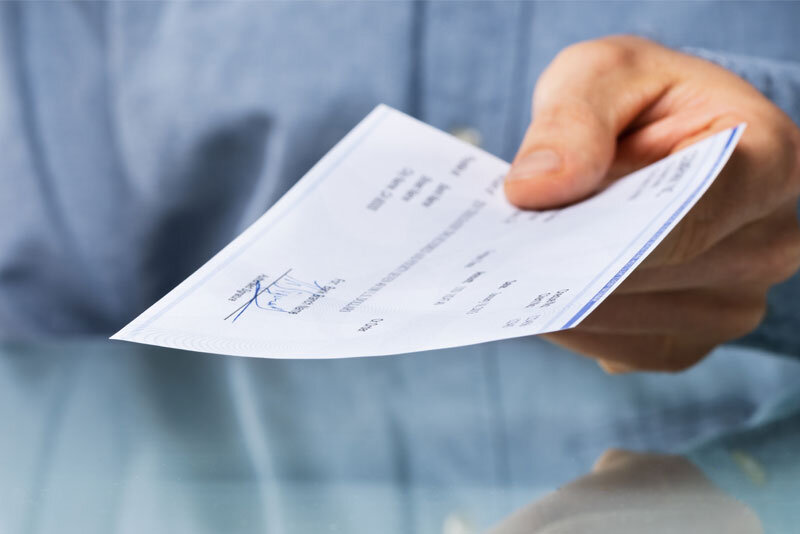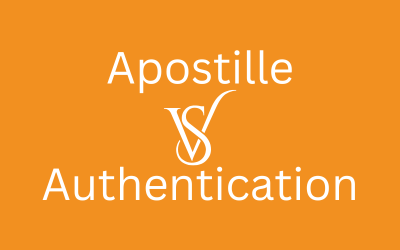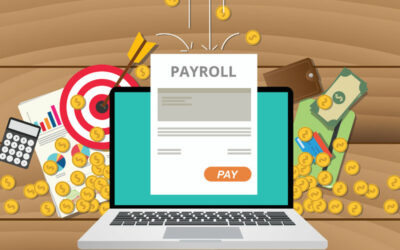Many small business owners start their companies as Sole Proprietorships. The business structure offers setup simplicity, cost-effectiveness, and minimal business compliance requirements. To determine if a Sole Proprietorship is right for them, entrepreneurs should consider the pros, cons, and nuances associated with it.
In this article, I’ll discuss what a Sole Proprietorship is, how sole proprietors pay themselves, how to pay taxes in a Sole Proprietorship, and examine some potential benefits of switching to an LLC instead.
What Is a Sole Proprietorship?
The IRS defines a Sole Proprietor as “someone who owns an unincorporated business by themselves.” The owner of a Sole Proprietorship can be one person or a married couple. As soon as a sole person (or married couple) offers goods or services for sale for profit rather than as a hobby, they are considered doing business as a sole proprietor. States do not require the filing of any formation documents to create a Sole Proprietorship, and there are no business structure-specific compliance requirements.
A sole proprietor has total control over their business’s administration, operations, and finances. In a Sole Proprietorship, the business and its owner are considered the same legal and tax-paying entity. That means the owner is personally responsible for all the company’s debts, taxes, and legal matters. If someone sues a business operated as a Sole Proprietorship, the business owner’s personal assets (home, retirement savings, checking accounts, vehicles, etc.) could be taken and used as compensation for damages and debts. Also, the owner’s credit score will take a hit if the business fails to pay its bills or loans.
Many types of businesses and professionals choose to begin their entrepreneurial journeys as self-employed sole proprietors. Common examples include babysitters, artisans, virtual assistants, web developers, marketing consultants, boutique owners, freelance graphic designers, freelance writers, bookkeepers, IT consultants, roofers, handypersons, house cleaners, and caterers.
How a Sole Proprietor is Paid
A sole proprietor is considered self-employed and is not an employee of the company. Therefore, paying yourself differs from paying hired employees in a Sole Proprietorship. While a sole proprietor can have other employees on payroll who receive wages and salaries from the company, a business owner cannot pay themself wages or salaries from which income tax, Social Security tax, or Medicare tax are withheld. Also, sole proprietors do not receive a Form W-2 from the Sole Proprietorship.
Sole Proprietors pay themselves by taking owner’s draws from the company’s profits. Typically, this is done by writing a business check in the name of the business owner. Or they may take a draw by withdrawing cash from the company or (if their bank allows) transferring funds from their business checking account to their personal checking account.
This brings up a very important point — even though a Sole Proprietorship is the same legal and tax entity as its owner, it’s critical to keep careful track of business expenses and income. One of the first steps in separating business and personal finances is to set up a business bank account. If the Sole Proprietorship uses the owner’s name, the account can be set up in that name. If the Sole Proprietorship sells its products or services under a fictitious name (a.k.a. a DBA), the business checking account can be set up in that name. Also, if the sole proprietor will use a credit card for purchases, it’s helpful to apply for a business credit card for company expenses. Again, that will help prevent the commingling of personal and business funds, which could make tax filing confusing and draw scrutiny from the IRS and other tax authorities. No one needs those headaches!
There are no rules for when a sole proprietor may take draws from their business. Likewise, they can take draws in whatever amounts they wish. However, stating the obvious, it’s wise for business owners to track their income and expenses to ensure they have enough money to pay their bills, loans, etc. before taking money for personal use.
The expenses your Sole Proprietorship incurs will depend on many factors, such as:
- Do you operate the business from your home, do you rent or lease space, or have you purchased a commercial property and have a business mortgage?
- How much do you drive or travel for business purposes?
- Are you in a highly regulated business that regularly needs the assistance of legal counsel?
- What kind of software platforms do you require to operate your business (e.g., accounting, CRM, email marketing, etc.)?
- What marketing strategies and tactics are you using to promote your business?
- Do you have the inventory you need to purchase and store?
- What types of business insurance policies do you need?
- Do you have employees?
- What office equipment and supplies does your business require?
The above list is just a snippet of some of the considerations that impact a business’s profitability. Before taking owner’s draws, sole proprietors should also estimate the taxes they owe on their profits so they keep the required funds aside for their quarterly payments.
It can be helpful to use an online accounting software platform (such as QuickBooks, FreshBooks, Xero, or Zoho) for recording income and expenses, monitoring cash flow, and tracking profit and loss.
How to Pay Taxes as a Sole Proprietorship
While operating a Sole Proprietorship typically requires less administrative oversight than other business structures, make no mistake that filing and paying taxes on time isn’t any less important. The IRS considers a Sole Proprietorship the same tax-paying entity as its owner for income tax purposes, so all profits and losses from the business pass through to the business owner. Self-employed individuals must pay income tax and self-employment taxes (Medicare and Social Security) when their Sole Proprietorship’s net earnings are $400 or more in the year. Sole proprietors use IRS Form 1040 and Schedule C to report income and loss from their business. The IRS also requires them to file Schedule SE to determine Social Security and Medicare taxes due on net earnings from self-employment. State and local governments also treat a business operating as a Sole Proprietorship and its owner as the same taxpayer. Forms and tax rates vary by state, county, and municipality.
Because owner’s draws are not paychecks, no income or self-employment taxes are withheld from them. Therefore, sole proprietors are responsible for paying all income, Medicare, and Social Security taxes on their business profits. Usually, this is done on a quarterly basis by estimating the amount of profit for the quarter. When estimating tax obligations, realize that owner’s draws (unlike employees’ wages and salaries, which are deductible business expenses) are NOT tax-deductible. When the sole proprietor files their personal annual income tax return at the end of the tax year, any discrepancy between what they paid and what is actually owed can be settled. If they overpaid, they would get a tax refund. If they underpaid, they would need to send a check or transfer funds to the IRS (and possibly to the state and local tax authorities).
Depending on the Sole Proprietorship’s industry, business activities, and staffing, it might be responsible for other taxes as well.
If a Sole Proprietorship has employees, it’s responsible for employment and payroll-related taxes, too, such as:
- Withholding employees’ federal, state, and local income tax from their paychecks and remitting those funds to the appropriate tax authorities
- Withholding employees’ portion of the FICA tax (Social Security and Medicare) and remitting those funds — along with the employer’s portion — to the federal government
- Paying FUTA (Federal Unemployment Tax Act) tax to the federal government
- Paying SUTA (State Unemployment Tax Act) tax to the state
Another payroll-related fee that applies to all employers, including sole proprietors, is workers’ compensation insurance.
Depending on the products and services the sole proprietor provides, they might be responsible for other taxes, such as excise tax or state (or city) sales tax. Some municipalities impose a variety of local business taxes — such as amusement tax, hotel occupancy tax, liquor tax, parking tax — as well.
Should You Switch to an LLC?
You may wonder if you can switch from a Sole Proprietorship to a Limited Liability Company. Moreover, should you?
Business owners who start as a Sole Proprietorship may reach a point where it makes sense to establish a registered business entity type. While the structure offers simplicity, several disadvantages may make it a less-than-ideal choice.
Sole Proprietorship disadvantages:
- Owner liability for all business legal issues and debts
- No tax flexibility
- Possible difficulty obtaining financing or funding – Banks and investors often prefer to back companies formed as LLCs or corporations.
Given those downsides, many business owners benefit from transitioning to a Single-Member Limited Liability Company (LLC).
Advantages LLCs have over Sole Proprietorships:
- A Single-Member LLC offers the same tax reporting and business compliance simplicity as a Sole Proprietorship.
- An LLC offers some tax flexibility. If an LLC meets the IRS’s eligibility criteria, it may elect to be taxed as an S Corporation, which may reduce the business owner’s Social Security and Medicare tax burden.
- On the legal front, there’s a notable advantage to forming an LLC. A Limited Liability Company is viewed as a separate legal entity from its members. Therefore, a Single-Member LLC helps safeguard its owner from personal liability for the legal claims and financial debts of the business.
- An LLC may have an easier time securing funding from financial institutions and investors. That can better position it for growth and expansion.
How to Change From Sole Proprietorship to LLC
While the process and requirements vary by state, the basics for changing from a Sole Proprietorship to a Single-Member LLC are essentially the same.
Here are the main tasks involved in converting an existing Sole Proprietorship to an LLC:
- Check your business name’s availability – If another LLC or Corporation already uses the name (or a very similar name) in the state, the name might be rejected when registering the LLC. It’s also wise to do a trademark search to verify that no companies have claimed the name nationally.
- Designate a registered agent – An LLC must maintain a registered agent in its state to accept legal and tax documents and other official notices on its behalf.
- Prepare an LLC operating agreement – You may wonder, “Is this necessary if my LLC has only one member?” While an LLC operating agreement is required, it can help even a Single-Member LLC by reinforcing that the company is being treated as a separate legal entity from its owner. An operating agreement is also useful for describing what should happen to the LLC in the event of its member’s death or inability to manage the company.
- File Articles of Organization – This is required to establish the LLC as a bona fide legal entity in the state. Alternate names used by some states for the filing are Certificate of Organization and Certificate of Formation.
- Obtain an EIN from the IRS – If a sole proprietor already has an EIN, they will need to get a new one for their LLC.
- Close out the Sole Proprietorship’s business bank account and open a new one for the LLC – Typically, banks will not let business owners transfer their Sole Proprietorship’s business bank account to their LLC.
- Put licenses and permits in your LLC’s name – Check with the licensing agencies to find out whether you can transfer licenses and permits from your Sole Proprietorship to your LLC or if you’ll need to apply for new ones.
- Understand your ongoing compliance requirements – States’ rules and regulations vary. Staying current with an LLC’s obligations is critical for keeping the entity in good standing with the state.
I encourage business owners to consult an attorney and accountant when deciding on a business structure. Those licensed professionals can offer valuable insight into business entities’ legal, tax, and financial effects — and they can provide advice based on your specific situation and goals.
Are You Ready to Form Your LLC?
We’re Here to Help!
Registering your new Limited Liability Company with CorpNet is quick and your satisfaction is guaranteed. Whether you’re forming a new LLC or converting an existing business to an LLC, we can handle all the paperwork for you.





